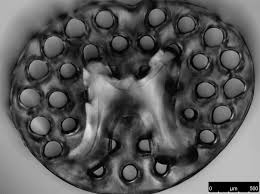
Breaking News
 BREAKING: CONGRESS MOVES TO NULLIFY BIDEN'S PROTECTION OF FAUCI, MILLEY, SCHIFF...
BREAKING: CONGRESS MOVES TO NULLIFY BIDEN'S PROTECTION OF FAUCI, MILLEY, SCHIFF...
 Cop: Do you know why I am stopping you?
Cop: Do you know why I am stopping you?
 The difference between a Constitutional Republic and a democracy.
The difference between a Constitutional Republic and a democracy.
 The Most American Man in the World (Dos Equis Style Ad)
The Most American Man in the World (Dos Equis Style Ad)
Top Tech News
 Chinese Scientists Produce 'Impossible' Steel to Line Nuclear Fusion Reactors in Major Break
Chinese Scientists Produce 'Impossible' Steel to Line Nuclear Fusion Reactors in Major Break
 1,000 miles: EV range world record demolished ... by a pickup truck
1,000 miles: EV range world record demolished ... by a pickup truck
 Fermented Stevia Extract Kills Pancreatic Cancer Cells In Lab Tests
Fermented Stevia Extract Kills Pancreatic Cancer Cells In Lab Tests
 3D printing set to slash nuclear plant build times & costs
3D printing set to slash nuclear plant build times & costs
 You can design the wheels for NASA's next moon vehicle with the 'Rock and Roll Challenge
You can design the wheels for NASA's next moon vehicle with the 'Rock and Roll Challenge
 'Robot skin' beats human reflexes, transforms grip with fabric-powered touch
'Robot skin' beats human reflexes, transforms grip with fabric-powered touch
 World's first nuclear fusion plant being built in US to power Microsoft data centers
World's first nuclear fusion plant being built in US to power Microsoft data centers
 The mitochondria are more than just the "powerhouse of the cell" – they initiate immune...
The mitochondria are more than just the "powerhouse of the cell" – they initiate immune...
 Historic Aviation Engine Advance to Unlock Hypersonic Mach 10 Planes
Historic Aviation Engine Advance to Unlock Hypersonic Mach 10 Planes
 OpenAI CEO Sam Altman Pitches Eyeball-Scanning World ID to Bankers
OpenAI CEO Sam Altman Pitches Eyeball-Scanning World ID to Bankers
3D Printed Bioimplants Repaired Spinal Cords and Restored Motor Function

The implants are hydrogel structures that can be rapidly 3D printed into different sizes and shapes, making them easily customizable to fit the precise anatomy of a patient's spinal cord injury. Researchers fill the implants with neural stem cells and then they are fitted, like missing puzzle pieces, into sites of spinal cord injury. New nerve cells grow and axons—long, hair-like extensions through which nerve cells pass signals to other nerve cells—regenerate, allowing new nerve cells to connect with each other and the host spinal cord tissue.
"Using our rapid 3D printing technology, we've created a scaffold that mimics central nervous system structures. Like a bridge, it aligns regenerating axons from one end of the spinal cord injury to the other. Axons by themselves can diffuse and regrow in any direction, but the scaffold keeps axons in order, guiding them to grow in the right direction to complete the spinal cord connection," said co-senior author Shaochen Chen, professor of nanoengineering at the UC San Diego Jacobs School of Engineering and faculty member of the Institute of Engineering in Medicine at UC San Diego.
"In recent years and papers, we've progressively moved closer to the goal of abundant, long-distance regeneration of injured axons in spinal cord injury, which is fundamental to any true restoration of physical function," said Tuszynski.



